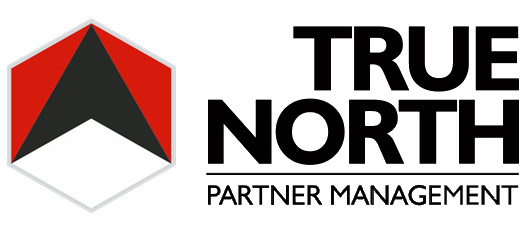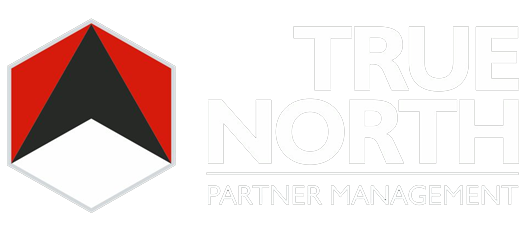The following post originally appeared on Forbes | August 6, 2014
In June of this year, Squire Sanders and Patton Boggs consummated the largest law firm merger of 2014, creating the 21st largest law firm in the world: Squire Patton Boggs. And while conducting a merger of this size is certainly noteworthy, the boot camp that Patton Boggs partook prior to walking down the aisle can be considered legendary. Along with shedding significant weight in the form of under-producing partners, they also shifted their compensation model and began implementing a succession plan. As a part of their challenging regimen, a somewhat uncelebrated, but incredibly influential restructuring team was brought in to aid in their transformation: Al Togut and Joff Mitchell.
Best known for their role in the Dewey & LeBoeuf bankruptcy, Togut and Mitchell are no strangers to stressed law firm financials. Mitchell, senior managing director of Zolfo Cooper, was appointed Dewey’s chief restructuring officer in 2012, and, along with Togut, negotiated a first-of-its-kind settlement with over 400 of their partners in under six months, aiding in the close of the case in under nine months; the quickest resolution on record. Mitchell’s expertise lies in restructurings, divestitures, and reorganizations; he knows how to get a house in order, which is, no doubt one of the major reasons he was brought in to help Patton Boggs lean up for their merger.
With over 30 years of experience and having been named a Top 100 Restructuring and Turnaround Professional last year by Global M&A Networks, Mitchell has an opinion or two about the right and wrong way to run a business, including law firms. See our exchange below:
On Describing The Restructuring Process
Parnell: From a restructuring standpoint, how would you describe the process at a 10K ft. view? Perhaps you can use the Dewey bankruptcy as an illustration.
Mitchell: I think that for law firms—or any professional services firm; but law firms especially, because a lawyer can’t have an employment contract or a contract with a firm—your assets walk out of the door every day. So, the restructuring and bankruptcy risks that are associated with a law firm are actually a lot different from most companies that face a restructuring or restructuring process.
What you saw at Dewey [& LeBoeuf] was a collapse of the firm, and the firm didn’t survive. That’s normally been the case: Few law firms that get into trouble, and certainly, I think, none that have gone through any sort of a bankruptcy, have actually been successfully restructured and survived. Normally that’s because there is some combination of A, there is no liquidity left to operate the firm, and B, the partners: When they smell trouble they pack up and take the client files with them.
The problem with partners leaving is that walking out the door on the eve of the collapse of the firm doesn’t absolve the partner of liability for the firm’s obligations. As you see in these long running bankruptcies or liquidations in firms like Howrey and others, a trustee ends up getting appointed to go after partners to claw back amounts paid by the firm to those partners in excess of profit generated or whilst the firm was insolvent. In many of these law firm collapses and bankruptcies, that process takes 8, 10, 12 years. Some have been going that long and are still not resolved. It is a nightmare for the partners involved. And it is potentially a nightmare for the new firms that those partners go to.
What we said to the partners at Dewey was, “Look, there is no way here to save this firm.” The lenders were not prepared to extend any further liquidity support for the firm to continue to operate. So we did encourage partners, once this was recognized, to leave, and to take their associates and client matters with them. But then we said to the partners, “We think there is a better way here than a long and protracted and unpleasant liquidation over claw back claims. And what we will do is work to broker a settlement between the partners and the firm’s secured creditors. And we think that makes sense for the creditors because it gives them something quickly and avoids years of litigation in getting what they are going to get. And we think it makes sense for you because you close this chapter of your life quickly and get beyond it.”
Within four months we came up with a rational, straightforward proposal to minimize partner pain while maximizing recoveries. It was heavily negotiated between the spokespeople for the various partner groups and the lenders. We were ultimately able to reach common ground. None of the partners were happy with the settlement. The creditors thought it was too low, and the partners all thought it was too high. When we got to that point, I knew we were in the right place.
On Signs That A Firm Is Heading For Trouble
Parnell: Speaking from a lateral partner’s standpoint, when these partners are let out into the market after a dissolution, it does impact their marketability in some way, shape, or form. It doesn’t preclude them from settling down with another firm, but at a minimum it impacts their negotiating position because there may be liability attached to them. What are some of the more tangible signs that a firm might be heading toward a potential restructuring. What are some criteria that might precipitate that?
Mitchell: It is most often associated with the capital structure. Typically, for companies and professional services firms that have debt, their debt is governed by a credit agreement. And one of the terms of that agreement is a requirement that the firm meets certain covenants. So there might be an earnings covenant, or a cash flow covenant, or an asset-based covenant. There may also be leverage covenants—leverage that relates to earnings—so typically the most obvious sign that an organization is heading for a restructuring is when their performance gets to a point where they’re looking like they are going to breach or violate one or more of the covenants. … That should be a trigger, but it is often not because management teams are often reluctant to face reality; they often think that they can fix the performance problems. So, without the triggers of a covenant violation with their debt, or a liquidity squeeze, they often don’t respond to operational performance issues appropriately.
On When To Call For Help
Parnell: Is there a sweet spot, for lack of a better term, where operational performance has gone so poorly, or gone on for so long, that it’s obvious that a firm is going to breach one of these covenants? It seems to me that there needs to be this critical mass of “pain” associated with operational performance in order for a firm to make changes. But, often enough, it is just too late once they finally do. Why is this the case?
Mitchell: Management teams are always reluctant to make that call for help. After we got involved at Patton Boggs, it was only a few weeks when Ed [Newberry] said to me, “I am just delighted with what your team is doing. My only regret is that we didn’t call you earlier.”
That is typical of the experience, I think, we have with most clients that end up engaging us for our services. It’s most typically left to the time when the situation becomes some sort of a crisis.
On Pro-action Versus Reaction
Parnell: Is there a proactive side to what your firm offers? In other words, have you ever been called in to optimize performance? Or even put in fail-safes to prevent a company or firm from moving into a restructuring?
Mitchell: Occasionally we have done that work. We most typically do it for private equity-owned portfolio companies where they recognize the benefits of doing it, and they urge their portfolio company to hire us for that sort of work.
Parnell: What are some of the things that your firm would do in an optimization scenario? Would there be fail-safes in the form of particular policies and procedures that surround performance or accounting, for example?
Mitchell: It’s not so much related to policies and procedures. What we will typically do is really look at the business plan. So we’ll look at actual performance over recent years. We will look at the company’s business plan going forward. We’ll look at the performance of the company by division and sector, and make sure that all parts of the business are contributing appropriately, and make sure that there is not one part that is masking the performance of another.
To make this relevant to law firms, what I’ve found is that, certainly in the firms that I’ve looked at, you’ve got partners that perform at a very high level—in terms of revenue generation and in terms of billing—and then you have others at the opposite end of the spectrum that don’t pay their way.
In a vibrant environment where law firm revenues are increasing, those strong revenues of certain groups or partners mask the poor performance of others and continue to carry them. But, when things change, and when some of those revenues go away or decline, it exposes the non-performing partners. My advice to law firms is to get your house in order; don’t wait for a crisis to deal with non-performing partners and lawyers.
On Responsibilities And BigLaw Frowning On Layoffs
Parnell: I’ve found that cutting those who don’t perform isn’t quite in vogue for some law firms.
Mitchell: Yes. Law firms will tell you that that isn’t their culture. … It’s a bit like an unfunded pension plan. The problem is that it is a huge burden on the active partners in any professional services firm. Arthur Andersen was the classic example. The firm had an unfunded pension plan. So, when you retired from Arthur Andersen, you were entitled to a percentage of your final earnings for life. The problem was that that was paid for by the active partners in the firm. … The trouble is that it is a drag on earnings and the partnership.
In an environment like we are in today, where legal revenues are under real pressure, you need to structure your firm so that you can maximize the compensation to those who are performing and contributing. And if you have to dilute their compensation by paying it to people who are not contributing, at the least it creates resentment. The worst case scenario is that you lose those people and they go to firms that are willing to pay them for what they generate.
Parnell: This is the tug of war going on between the team-oriented and the confederated culture and compensation systems.
Mitchell: It is important to keep a balance. I am not an advocate of the pure dog-eat-dog culture. I believe that there does need to be a team approach. I believe that partners that do a lot of work, bill a lot of hours, also need to be compensated well, but differently, from those who make it rain and bring in the revenue.
It is hard to find that balance. But that is the job of the managing partner and the executive committee to strike that balance between the very pure pay-for-performance, and a more balanced view of paying for total contributions to the firm.
Two things have to happen for a partner to be paid. One is the firm has to generate earnings for partners, and two, the individual has to have performed. I think it is very dangerous for firms to guarantee compensation to anyone, because at the end of the day, if the firm has not generated the earnings, then the compensation won’t be there to meet the guarantees.
That was one of the issues with Dewey: They had a very significant number of partners that were guaranteed compensation.
On Guaranteed Compensation Contracts And Measuring Performance
Parnell: From my understanding of the Dewey bankruptcy, a substantial number of attorneys with guaranteed pay did not perform; they did not bring along the business that they promised. There is a conflict of interest with contractual guarantees: There is nothing that is motivating these guys to perform. I think that Dewey did a pretty good job of bringing the dangers of guaranteed compensation to light, and scaring some of today’s firms away from using it as a recruitment tool.
What are some of the things that management or leadership can do to promote good financial hygiene for the firm? Are there things in particular that you would suggest, or that come to mind?
Mitchell: Professional services firms are relatively simple businesses to manage: There is no cost of goods; there is no manufacturing; there is not a lot of capital expenditure to commit to a product line for a certain amount of life. The big variable is revenue. The big cost commitments are leases and people. So, at the end of the day, you’ve just got to make sure, as a professional services firm, that your commitment to employees and partners is in balance with your revenue.
You just need to have some very basic, simple, performance measures. Your ratio of partners to associates, appropriate occupancy costs relative to revenue; but you need to be focused on generating the revenue and making sure that you keep your costs—both in terms of compensation, and in terms of the number of partners and employees—in line with revenue.
Also, there are lots of industry measures, and I think that The American Lawyer reports them. One is revenue per lawyer. … And the other is profits per lawyer, which is another measure…. You’ve just got to be focused on those basics, and when you start to get out of line, you need to take corrective action. There are only a couple of places that it can come from. You either increase your revenue or reduce your costs, primarily by taking out headcount. For some reason, very few law firms are prepared to deal with the headcount issues.



